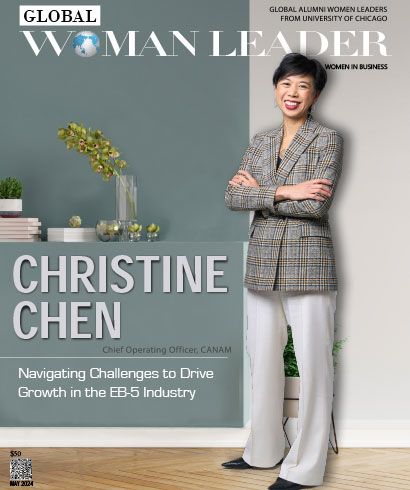Erika is a seasoned leader in branding and commerce, driving global recognition through innovative strategies. She oversees blockchain, web3, gaming, and virtual experiences. With 15+ years' experience across diverse industries, Erika's expertise spans product development, marketing, and immersive content creation.
In a recent conversation with The Global Woman Leader Magazine, Erika shared her insights on navigating resistance to change in global organizations, harmonizing short-term goals with long-term vision. She emphasized fostering innovation, risk-taking, and stability, while nurturing resilience, adaptability, and agility in teams amidst evolving circumstances.
As per your experience, what are effective strategies for managing resistance to change in a global organization, while also balancing short-term performance goals with long-term vision during the transformation process?
When managing resistance to change, the key is clear communication that connects with both business goals and customer benefits. It’s about showing not just why changes are necessary, but how they will help us grow and earn more brand love. This approach gets everyone on the same page, focusing on common goals despite our different roles. At Adidas, I make it a point to listen to everyone from the boardroom to the break room through task forces and steering committees. This way, everyone feels they’re part of shaping our future, not just being told what to do.
In today’s world, ethical considerations are paramount in driving organizational change. How can leaders ensure that their change initiatives are aligned with ethical principles and contribute positively to society?
Ethical integrity is the cornerstone of all our change initiatives. It’s essential that every step we take resonates with our core values and connects with everyone involved be it our employees, customers, or the board. Remembering our tough times during the #deleteuber crisis, I learned firsthand the importance of quickly owning up to our mistakes to rebuild trust and protect our reputation. Constantly matching our actions against our values not only keeps us on track but also prepares us to stand firm by our decisions in the public eye.
In dealing with the inherent ambiguity and uncertainty in complex global environments, how can leaders cultivate a culture of innovation and risk-taking while also maintaining organizational stability?
Fostering a culture of innovation starts with who you choose to lead. The best leaders are those who establish the right altitude of ambition but also listen they take in feedback and make smart adjustments without stifling creativity. At Adidas, I empower such leaders through initiatives like controlled pilots, encouraging them to guide their teams through new and challenging ideas. Like Google's '20% project' or their 'Area 120' incubator, giving people clear roles and the freedom to explore ensures that our innovation efforts are both ambitious and aligned with our long-term goals.
Leading change in a global organization often requires collaboration and alignment across diverse stakeholders. What approaches can be taken to build and leverage networks, both within and outside of the organization, to drive transformative change?
Driving transformative change means keeping your ears open to voices from both inside and outside your brand. My teams actively seek insights from industry experts and gather feedback from our consumers and competitors to broaden our perspectives. Integrating these diverse viewpoints from the start helps us to craft strategies that are not only comprehensive but also adaptable to future challenges. This thorough preparation ensures our plans are robust and ready to roll out without major hitches.
How can resilience and adaptability be maintained in the face of unexpected setbacks and obstacles during change initiatives, and how can leaders ensure that their teams remain agile and responsive to evolving circumstances?
Dealing with setbacks is all about staying adaptable and keeping the team aligned to the goals. It’s crucial to foster an environment where change is seen as a journey of continuous improvement. Regularly discussing potential risks and recalibrating our strategies helps us to stay resilient and responsive. I always make it a point to support my team through thick and thin, even if this means personally drafting crisis comms at 4am (it’s happened!), reminding them that every setback is a learning opportunity and a chance to pivot towards even better solutions.
With sustainability assuming a crucial role, how can leaders incorporate environmental and social considerations into their change initiatives and ensure that they are consistent with the organization’s broader strategic objectives?
Integrating 'people & planet' into our initiatives means constant dialogue with our DEI and sustainability teams. By regularly updating our strategies and ensuring they align with our environmental and social goals, we keep our brand committed to making a positive impact. It’s about making sure that 'people & planet' are more than buzzwords—they're integral parts of our daily decisions and strategies, continuously shaping our corporate identity and actions.
Copyright © All rights reserved. Global Woman Leader



.png)
